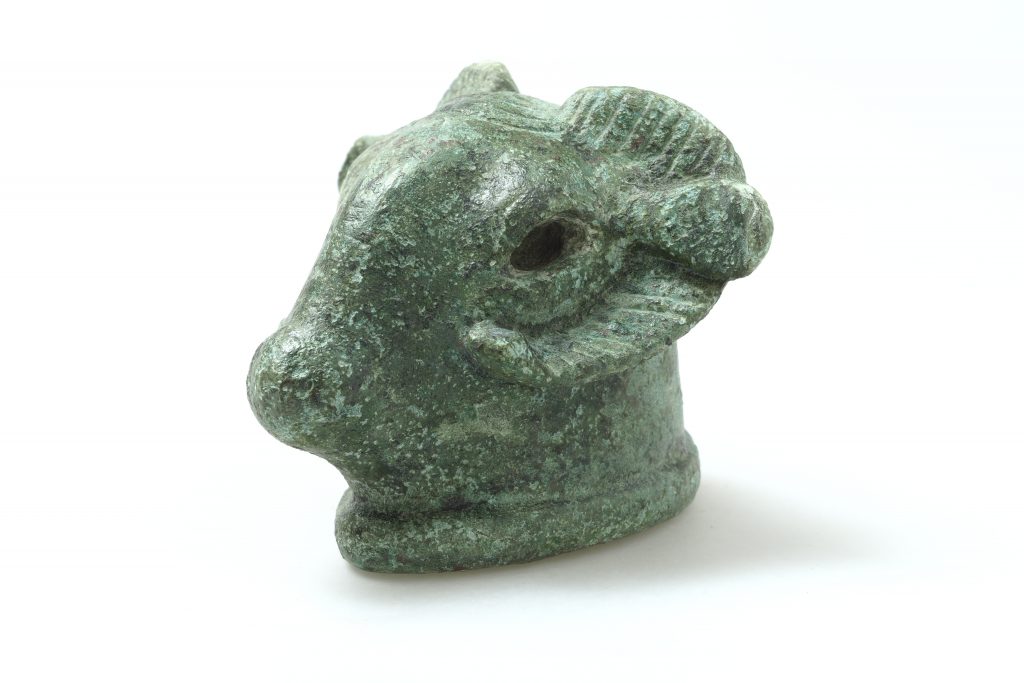
On February 14, 2020, the National Archaeological Institute with a Museum at the Bulgarian Academy of Sciences (NAIM at BAS) presented the thirteenth national archaeological exhibition “Bulgarian Archeology 2019”. Traditionally, the exhibition presents the most interesting finds and rich illustrative material from the field work of Bulgarian archaeologists in the previous year.
The opening was attended by Amelia Gesheva, Deputy Minister of Culture of the Republic of Bulgaria, Assoc. Prof. Dr. Todor Chobanov, Deputy Mayor of Sofia Municipality, Acad. Julian Revalski, President of BAS and Corresponding Member. Vasil Nikolov, Deputy Chairman of the Bulgarian Academy of Sciences, diplomatic representatives.
Traditionally, the exhibition opens on February 14, Archaeologist’s Day. “In the past year, for the first time in Bulgaria, there are so many rescue studies and so many sites have been studied,” said the director of NAIM at BAS, Assoc. Prof. Dr. Hristo Popov and added: “The permits issued for arch. There are over 500 studies. The projects supported by strategically important studies by the Ministry of Culture are over 120. Sofia Municipality has also contributed to the research of the cultural and historical heritage of Sofia ”.
“Being an archaeologist is above all a passion – a passion to risk learning more than the unknown,” said Deputy Minister Amelia Gesheva, admiring and thanking Bulgarian archaeologists. “2020 will not be easy. More funds have been provided for archeological excavations, “she added.
Assoc. Prof. Dr. Todor Chobanov undertook on behalf of the Sofia Municipality to support NAIM at BAS in all studies conducted in the municipality.
The exhibition “Bulgarian Archeology 2019” presents over 300 exhibits from 26 sites and posters for research from early prehistory to the Middle Ages. Among them are the ongoing explorations of the Kozarnika and Bacho Kiro caves, the Neolithic settlement of Slatina, Sofia, the prehistoric settlement mounds Yunatsite and Kozareva Mogila, the Late Bronze Age necropolis at Baley, the Greek colony Apollonia, Sozopol, the medieval towns of Veliko Tarnovo, Kaliakra and Periakra. Sites from the rescue archeological excavations along the Balkan Stream gas pipeline, the interconnector connection Stara Zagora – Komotini and the Hemus highway, from poorly studied or unexplored sites in Northwestern Bulgaria, are also presented. Among them impress Gramada, Vidin region; Vladinya, Lovech region; Stamboliyski and Orlovo, Haskovo region. Interesting multi-layered objects inhabited during different epochs have been studied. An example of such a site is Gramada, which includes prehistoric settlements from the Neolithic and Bronze Ages, a Roman villa and necropolis to it, a medieval settlement and necropolis.
Among the most impressive finds are anthropomorphic figurines and vessels from Stamboliyski and Orlovo, a bone needle with the head of an animal from Slatina, a decorated statuette from Baley, a ceramic phial and silver torkva, a breastplate and a ring from Vladinia, a bronze statuette of a ram from Apollonia, a golden phalera from Almus, a bronze belt from Golemantsi, a cross-reliquary from Perperikon, a collective find of silver coins from Tarnovo and a gold ring-seal from Kaliakra.
The 13th exhibition “Bulgarian Archeology” became possible thanks to the partner support of 17 historical and archeological museums in the country, which provide finds from their funds. These are: the National History Museum, the regional history museums in Veliko Tarnovo, Vidin, Kardzhali, Lovech, Pazardzhik, Smolyan, Sofia, Haskovo, Shumen and Yambol, the Archaeological Museum “Ancient Nessebar” and the history museums in Belogradchik, Dryanovo, Kavarna, Lom and Sevlievo.
Source: bas.bg.
For you betrayed: Stefan Ivanov Proynov
See more: fakeart.eu






